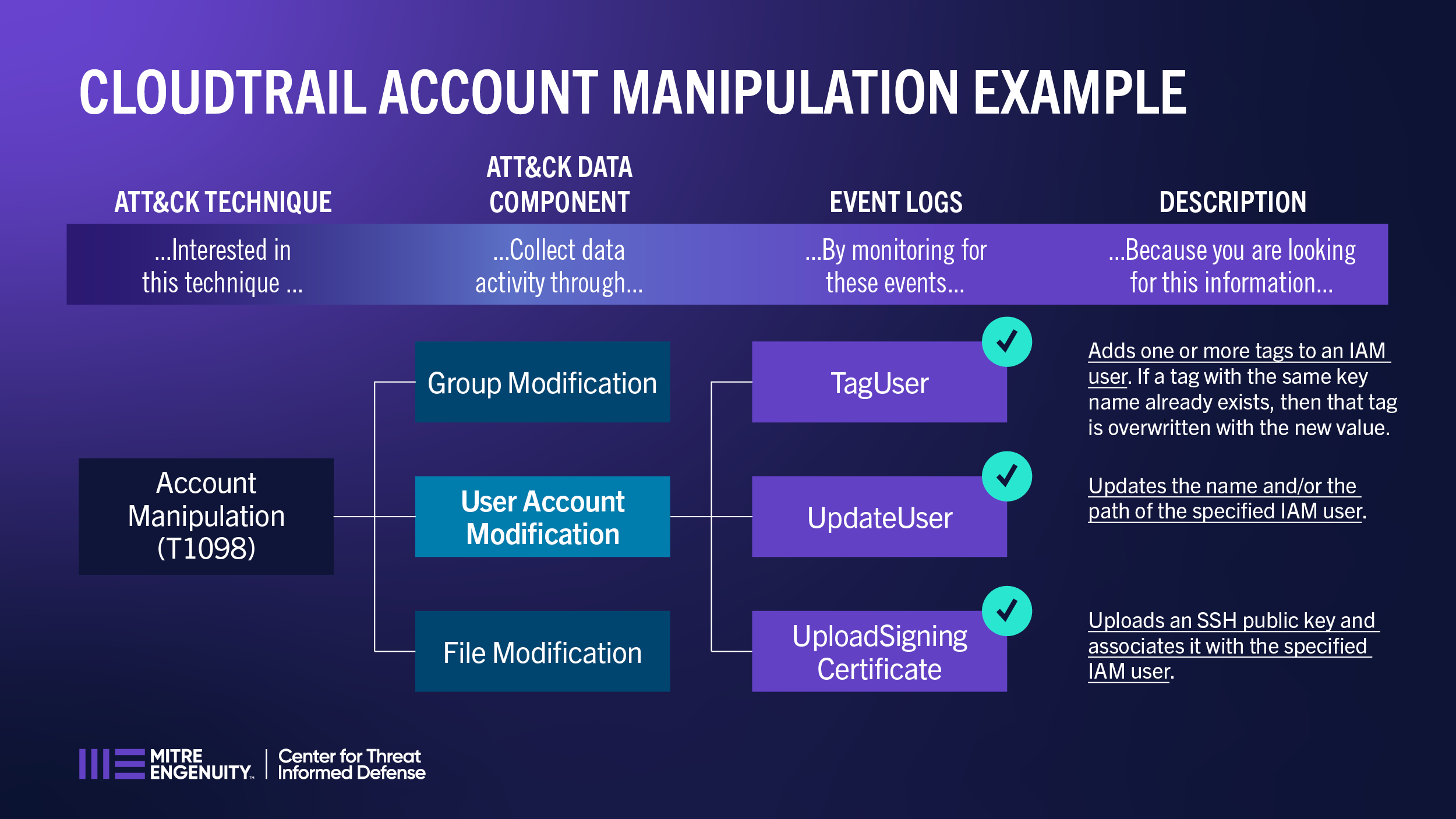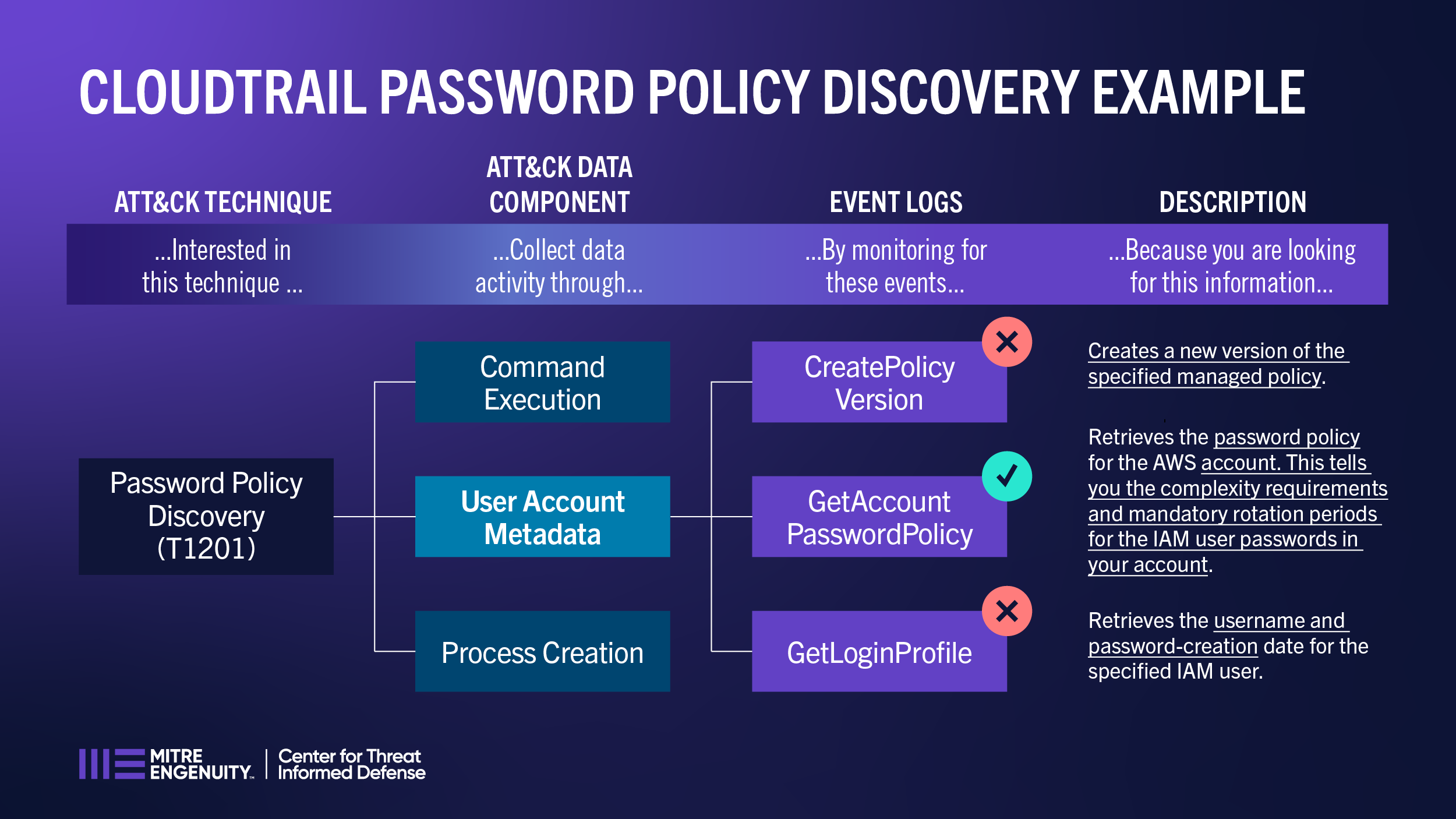CloudTrail Example Scenarios¶
Both CloudTrail examples involve User Account data components. The first reviews the use of User Account Modification to provide visibility into Account Manipulation (T1098), while the second considers User Account Metadata for detection of Password Policy Discovery (T1201) behavior.
Account Manipulation (T1098)¶
The following are the criteria considered for Account Manipulation (T1098). These were directly taken by reviewing the definition of the technique.

Looking at the event data, is this enough evidence to conclude that an account was manipulated per T1098? Most CloudTrail events are straightforward, and the associated API call performs a User Account Modification that meets the criteria for concluding that an Account Manipulation has occurred.
TagUser:
Yes. Careful attention was given to CloudTrail Roles, and related information. For example, the “TagUser/UntagUser” API entry was examined to determine that the act of Tagging/Untagging met the conditions to change (give or takeaway) access. One concept that came up was to explore relevant sub-techniques, in case those could provide additional insight in deciding if an event met the defined conditions:
References:
UpdateUser:
Yes. Another interesting event is UpdateUser. As an API call, it does not perform a technical action that results in literal modification of concern (i.e., no access or permissions for an IAM user is changed). It does not preserve adversary action in a purely technical sense. HOWEVER: It does qualify because it could be used to “hide in plain sight” The event is worth noting as potential evidence of (an unexpected) name change.
References:
UploadSigningCertificate:
Yes. This provides the name of the IAM user the signing certificate is for and the contents of the signing certificate. The elements provide information that can be used to look for changes to account objects.
References:
Password Policy Discovery (T1201)¶
The following are the criteria considered for Password Policy Discovery (T1201). These were directly taken by reviewing the definition of the technique.

Looking at the event data, is this enough evidence to conclude that attempts were being made to access detailed information about the password policy per technique T1201? This technique may be used by adversaries attempting to access/obtain detailed password policy information. This policy information may aid the creation of password lists for dictionary or brute force attacks.
CreatePolicyVersion:
No. This contains details about IAM policy versions, but does not provide information about attempts to access policy documents.
References:
GetAccountPasswordPolicy:
Yes. The description of T1201 references that “password policies can be discovered in cloud environments using available APIs such as GetAccountPasswordPolicy in AWS.”
Select examples of User Account Metadata events:
AttachRolePolicy
AttachUserPolicy
CreatePolicy
CreatePolicyVersion
DeleteAccountPasswordPolicy
DeletePolicyVersoin
DeleteRolePolicy
DeleteUserPolicy
DetachUserPolicy
DetachRolePolicy
ChangePassword
GenerateCredentialReport
GetAccountPasswordPolicy
ListAttachedRolePolicies
ListEntitiesForPolicy
ListPoliciesGrantingServiceAccess
References:
GetLoginProfile:
No. This contains information about IAM usernames and password creation dates, not actual passwords or password policy constructs.
References:
